
The Denver & Rio Grande Western Railroad, often shortened to Rio Grande, D&RG or D&RGW, formerly the Denver & Rio Grande Railroad, was an American Class I railroad company. The railroad started as a 3 ft narrow-gauge line running south from Denver, Colorado, in 1870. It served mainly as a transcontinental bridge line between Denver, and Salt Lake City, Utah. The Rio Grande was also a major origin of coal and mineral traffic.

A heritage railway or heritage railroad is a railway operated as living history to re-create or preserve railway scenes of the past. Heritage railways are often old railway lines preserved in a state depicting a period in the history of rail transport.

The Union Pacific Railroad, legally Union Pacific Railroad Company and simply Union Pacific, is a freight-hauling railroad that operates 8,300 locomotives over 32,200 miles (51,800 km) routes in 23 U.S. states west of Chicago and New Orleans. The Union Pacific Railroad system is the second largest in the United States after BNSF and is one of the world's largest transportation companies. The Union Pacific Railroad is the principal operating company of the Union Pacific Corporation, both headquartered in Omaha, Nebraska. The president of Union Pacific since 2015 is Lance Fritz.

The California Zephyr was a passenger train that ran between Chicago, Illinois and Oakland, California via Omaha, Denver, Salt Lake City, Winnemucca, Oroville and Pleasanton. It was operated by the Chicago, Burlington & Quincy (CB&Q), Denver & Rio Grande Western (D&RGW) and Western Pacific (WP) railroads, all of which dubbed it "the most talked about train in America" on March 19, 1949, with the first departure the following day. The train was scheduled to pass through the most spectacular scenery on its route in the daylight. The original train ceased operation in 1970, though the D&RGW continued to operate its own passenger service, the Rio Grande Zephyr, between Salt Lake City and Denver, using the original equipment until 1983. In 1983 a second iteration of the California Zephyr, an Amtrak service, was formed. The current version of the California Zephyr operates partially over the route of the original Zephyr and partially over the route of its former rival, the City of San Francisco.
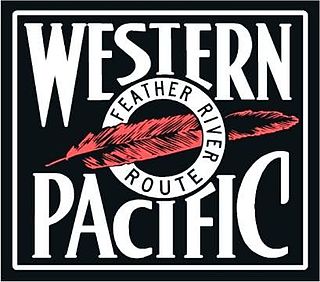
The Western Pacific Railroad was a Class I railroad in the United States. It was formed in 1903 as an attempt to break the near-monopoly the Southern Pacific Railroad had on rail service into northern California. WP's Feather River Route directly competed with SP's portion of the Overland Route for rail traffic between Salt Lake City/Ogden, Utah, and Oakland, California, for nearly 80 years. In 1982, the Western Pacific was acquired by the Union Pacific Corporation and it was soon merged into their Union Pacific Railroad. The Western Pacific was one of the original operators of the California Zephyr.

The Carolwood Pacific Railroad (CPRR) was a 7 1⁄4-inch gauge ridable miniature railroad run by Walt Disney in the backyard of his home in the Holmby Hills neighborhood of Los Angeles, California. It featured the Lilly Belle, a 1:8-scale live steam locomotive named after Disney's wife, Lillian Disney, and built by the Walt Disney Studios' machine shop. The locomotive made its first test run on December 24, 1949. It pulled a set of freight cars, as well as a caboose that was almost entirely built by Disney himself. It was Disney's lifelong fascination with trains, as well as his interest in miniature models, that led to the creation of the CPRR. The railroad, which became operational in 1950, was 2,615 feet (797 m) long and encircled his house. The backyard railroad attracted visitors to Disney's home; he invited them to ride and occasionally drive his miniature train. In 1953, after an accident occurred in which a guest was injured, the CPRR was closed to the public.
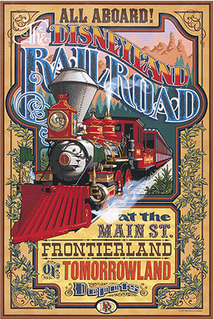
The Disneyland Railroad (DRR), formerly known as the Santa Fe & Disneyland Railroad, is a 3-foot narrow-gauge heritage railroad and attraction in the Disneyland theme park of the Disneyland Resort in Anaheim, California, in the United States. Its route is 1.2 miles (1.9 km) long and encircles the majority of the park, with train stations in four different park areas. The rail line, which was constructed by WED Enterprises, operates with two steam locomotives built by WED and three historic steam locomotives originally built by Baldwin Locomotive Works. The ride takes roughly 18 minutes to complete a round trip on its main line when three trains are running, and 20 minutes when four trains are running. Two to four trains can be in operation at any time, three on average.

The Denver, South Park, and Pacific Railroad was a historic 3 ft narrow gauge railroad that operated in Colorado in the western United States in the late 19th century. The railroad opened up the first rail routes to a large section of the central Colorado mining district in the decades of the mineral boom. The railroad took its name from the fact that its main line from Denver ascended the Platte Canyon and traversed South Park. Founded in 1872 by Colorado Governor John Evans, the company was purchased by the Union Pacific Railway in 1880, though it continued to be operated independently. The line went bankrupt in 1889 and was reorganized under the new moniker the Denver, Leadville and Gunnison Railway. When the Union Pacific went bankrupt in 1893, the DL&G lines went into receivership and were eventually sold to the Colorado and Southern Railway. In the first half of the 20th century, nearly all the company's original lines were dismantled or converted into 4 ft 8 1⁄2 instandard gauge. The last train to run the old DSP&P tracks was from Como, Colorado on April 11, 1937. A section of the standard gauge line between Leadville and Climax is still operated as a passenger excursion railroad called the Leadville, Colorado and Southern Railroad. At its peak the Denver, South Park and Pacific Railroad had 335 miles (539 km) of narrow gauge line, making it the largest narrow gauge railroad in the state of Colorado.

Tennessee Pass elevation 10,424 ft (3,177 m) is a high mountain pass in the Rocky Mountains of central Colorado in the United States. The pass was named after Tennessee, the native state of a group of early prospectors.

A bank engine, banking engine, helper engine or pusher engine is a railway locomotive that temporarily assists a train that requires additional power or traction to climb a gradient. Helpers/bankers are most commonly found in mountain divisions, where the ruling grade may demand the use of substantially greater motive power than that required for other grades within the division.

The Mount Hood Railroad is a heritage and shortline freight railroad located in Hood River, Oregon, 60 miles (97 km) east of Portland, Oregon, United States.
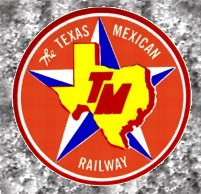
The Texas Mexican Railway is a railroad that operates as a subsidiary of the Kansas City Southern Railway in Texas. It is often referred to as the Tex-Mex, or TexMex Railway.

A ridable miniature railway is a large scale, usually ground-level railway that hauls passengers using locomotives that are often models of full-sized railway locomotives.
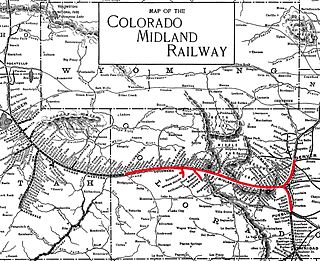
The Colorado Midland Railway, incorporated in 1883, was the first standard gauge railroad built over the Continental Divide in Colorado. It ran from Colorado Springs to Leadville and through the divide at Hagerman Pass to Glenwood Springs and Grand Junction.

The Omaha Zoo Railroad (OZRR) is the name of a 2 ft 6 in narrow-gauge heritage railroad located in the Henry Doorly Zoo & Aquarium in Omaha, Nebraska. The railroad offers a narrow gauge excursion train for zoo visitors hauled by a steam locomotive. The train loads passengers at two stations within the zoo. Annual ridership of the Omaha Zoo Railroad is over 200,000 people.

Thistle is a ghost town in Spanish Fork Canyon in southeastern Utah County, Utah, United States. During the era of steam locomotives, the town's primary industry was servicing trains for the Denver and Rio Grande Western Railroad. The fortunes of the town were closely linked with those of the railroad until the changeover to diesel locomotives, when the town started to decline.
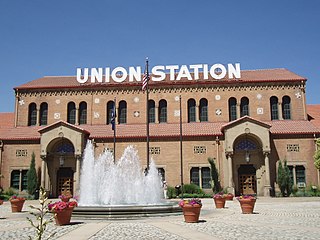
Union Station, also known as Ogden Union Station, is a train station in Ogden, Utah, at the west end of Historic 25th Street, just south of the Ogden Intermodal Transit Center. Formerly the junction of the Union Pacific and Central Pacific Railroads, its name reflects the common appellation of train stations whose tracks and facilities are shared by railway companies.

An oil burner engine is a steam engine that uses oil as its fuel. The term is usually applied to a locomotive or ship engine that burns oil to heat water, to produce the steam which drives the pistons, or turbines, from which the power is derived.
Plowman's Railroad operates the collection of 7 1⁄4 in gauge American outline steam and diesel locomotives from the former Dobwalls Adventure Park and is located at Plowmans Garden Nursery & Plant Centre Ltd, West Parley, Ferndown, Dorset. The rolling stock has since been sold and shipped to Australia and the railway is now run by the West Parley Miniature Engineering Society. Please note that this railway has now closed following the complete collapse of the Garden Centre.
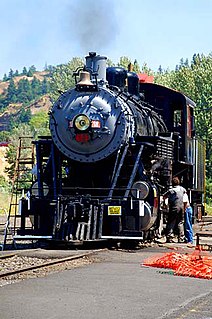
Lake Superior and Ishpeming Railroad No. 18 is a preserved class SC-4 2-8-0 “Consolidation” type Steam locomotive. It was built by the American Locomotive Company in Pittsburg, Pennsylvania for the Lake Superior and Ishpeming Railroad in 1910 as engine No. 11. It was renumbered 18 in 1924. It was used for pulling carloads of iron ore, as well as some passenger trains on branch lines, until it was retired in 1962. In 1963, it was sold to Marquette and Mount Huron tourist railroad, but it never operated there. It was sold to the Lake States Steam Association in 1985, and it was stored at the Lumberjack Steam Train and Camp 5 Museum in Laona, Wisconsin. In 1989, it became the first locomotive to operate on the Grand Canyon Railway since 1971, and it pulled tourist excursions between Williams, Arizona and the Grand Canyon National Park, until 2003. In 2007, it was sold to the Mount Hood Tourist Railroad in Oregon to pull excursions there. Just a few months later, it was sold again to Rio Grande Scenic Railroad to pull more excursions between Alamosa and La Veta, Colorado. Now, as of 2021, No. 18 has been put up for sale or lease on the Ozark Mountain Railcar Equipment, while still being stored out of service in Alamosa.































